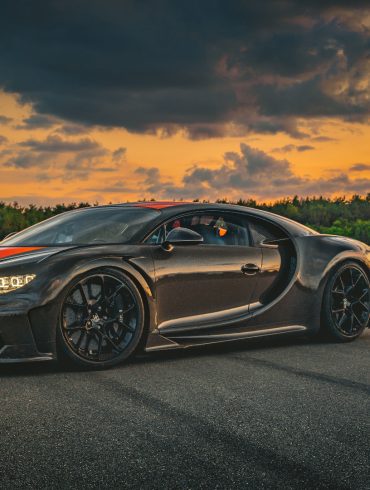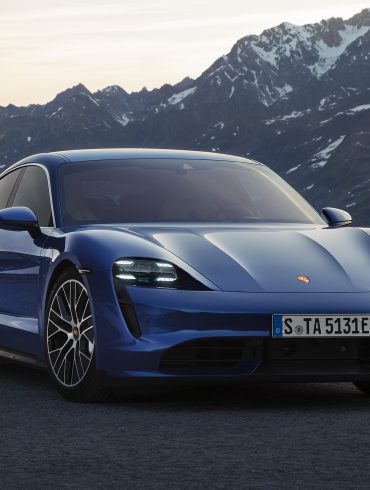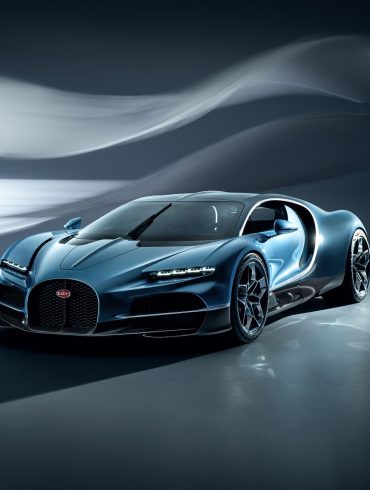2010s 0-60 & Quarter Mile Times
2010s Automotive Acceleration & Performance Data
Welcome to the ultimate guide to 0-60 mph and quarter mile times for 2010s cars! This page is your go-to resource for the most accurate, comprehensive, and easily accessible performance statistics of classic vehicles from the 2010s. Whether you're a supercar fan, or simply fascinated by this awesome era, our meticulously curated database offers unparalleled insights into the acceleration and speed of these timeless machines. Explore the remarkable performance of 2010s cars.
2010s Acceleration (0-60 mph & Quarter Mile Times)
2010s 0-60 mph and quarter-mile acceleration times. Narrow down your search via the filters.
| Year | Model | Full Model & Variant | 0-60 mph (Seconds) | 1/4 Mile Time (Seconds) |
|---|---|---|---|---|
| 2012 | Atom | Ariel Atom 500 (V8) | 2.30 | |
| 2018 | Dodge Challenger | Dodge Challenger SRT Demon | 2.30 | 9.60 |
| 2017 | Tesla Model S | Tesla Model S P100D 'Ludicrous+' | 2.30 | 10.50 |
| 2011 | Bugatti Veyron | Bugatti Veyron 16.4 Super Sport | 2.40 | 9.60 |
| 2013 | Bugatti Veyron | Bugatti Veyron 16.4 Grand Sport Vitesse | 2.40 | 9.90 |
| 2017 | Bugatti Chiron | Bugatti Chiron Sport | 2.40 | 9.60 |
| 2018 | Bugatti Chiron | Bugatti Chiron Sport | 2.40 | 9.40 |
| 2015 | Ferrari LaFerrari | Ferrari LaFerrari | 2.40 | 9.70 |
| 2016 | Ferrari LaFerrari | Ferrari LaFerrari FXX K | 2.40 | 9.70 |
| 2014 | Rimac Concept One | Rimac Concept One | 2.40 | |
| 2017 | Tesla Model S | Tesla Model S P100D 'Ludicrous' | 2.40 | 10.60 |
| 2015 | Atom | Ariel Atom 3.5R | 2.50 | 10.80 |
| 2010 | Bugatti Veyron | Bugatti Veyron 16.4 Grand Sport | 2.50 | 10.10 |
| 2015 | Bugatti Veyron | Bugatti Veyron Rembrandt Legends Edition | 2.50 | 9.90 |
| 2013 | Caterham Seven | Caterham Seven R600 | 2.50 | |
| 2015 | Koenigsegg One:1 | Koenigsegg One:1 | 2.50 | 10.00 |
| 2011 | Lamborghini Sesto Elemento | Lamborghini Sesto Elemento | 2.50 | 10.40 |
| 2018 | Lamborghini Aventador | Lamborghini Aventador SVJ | 2.50 | 10.30 |
| 2018 | Lamborghini Aventador | Lamborghini Aventador SVJ Roadster | 2.50 | 10.30 |
| 2019 | Lamborghini Aventador | Lamborghini Aventador SVJ 63 | 2.50 | 10.30 |
| 2019 | Lamborghini Aventador | Lamborghini Aventador SVJ Roadster 63 | 2.50 | 10.30 |
| 2015 | McLaren P1 | McLaren P1 GTR | 2.50 | 9.80 |
| 2016 | McLaren P1 | McLaren P1 LM | 2.50 | 9.80 |
| 2013 | Pagani Zonda | Pagani Zonda Revolución | 2.50 | |
| 2014 | Pagani Zonda | Pagani Zonda 760 Roadster | 2.50 | |
| 2015 | SSC Tuatara | SSC Tuatara | 2.50 | 9.70 |
| 2013 | Atom | Ariel Atom 3.5 | 2.60 | |
| 2017 | Audi R8 | Audi R8 V10 Plus | 2.60 | 10.60 |
| 2017 | Ferrari LaFerrari | Ferrari LaFerrari Aperta | 2.60 | 9.70 |
| 2016 | Koenigsegg Agera | Koenigsegg Agera RS | 2.60 | 9.96 |
| 2016 | Koenigsegg Regera | Koenigsegg Regera | 2.60 | 10.40 |
| 2010 | Pagani Zonda | Pagani Zonda R | 2.60 | |
| 2015 | Porsche 918 Spyder | Porsche 918 Spyder | 2.60 | 9.80 |
| 2015 | Radical RXC | Radical RXC 500 Turbo | 2.60 | |
| 2013 | SSC Ultimate Aero | SSC Ultimate Aero XT | 2.60 | |
| 2016 | Atom | Ariel Atom 3S | 2.70 | 10.70 |
| 2013 | Caterham Seven | Caterham Seven Superlight R500 SV | 2.70 | |
| 2013 | Caterham SP300R | Caterham SP300R | 2.70 | |
| 2014 | Caterham Seven | Caterham Seven 620R | 2.70 | |
| 2017 | Ferrari 488 | Ferrari 488 GTB Scuderia | 2.70 | 10.45 |
| 2019 | Ferrari 488 | Ferrari 488 Pista | 2.70 | 10.10 |
| 2012 | Koenigsegg Agera | Koenigsegg Agera R | 2.70 | 10.30 |
| 2017 | NIO EP9 | NIO EP9 Electric Supercar | 2.70 | |
| 2017 | Nissan GT-R | Litchfield Nissan GT-R LM20 Track Edition | 2.70 | |
| 2019 | Pagani Huayra | Pagani Huayra BC | 2.70 | |
| 2018 | Porsche 911 | Porsche 911 991 GT2 RS Clubsport Racing (991.2) | 2.70 | |
| 2019 | Porsche 911 | Porsche 935 Tribute (991.2) | 2.70 | |
| 2015 | Tesla Model S | Tesla Model S P90D 'Ludicrous' | 2.70 | 11.00 |
| 2019 | Atom | Ariel Atom 4 | 2.80 | 12.50 |
| 2019 | BMW M5 Series | BMW M5 Competition | 2.80 | 10.90 |
| 2016 | Callaway Corvette | Callaway Corvette SC757 | 2.80 | 10.50 |
| 2011 | Caterham Seven | Caterham Seven Superlight R500 | 2.80 | |
| 2015 | Ferrari F12 | Ferrari F12 TDF | 2.80 | 10.60 |
| 2016 | Ferrari 488 | Ferrari 488 GTB | 2.80 | 10.50 |
| 2018 | Ferrari 812 | Ferrari 812 Superfast | 2.80 | 10.40 |
| 2019 | Ferrari Monza | Ferrari Monza SP1 | 2.80 | 10.28 |
| 2019 | Ferrari Monza | Ferrari Monza SP2 | 2.80 | 10.28 |
| 2010 | Koenigsegg Trevita | Koenigsegg Trevita | 2.80 | 9.70 |
| 2013 | Koenigsegg Agera | Koenigsegg Agera S | 2.80 | 10.40 |
| 2013 | Lamborghini Veneno | Lamborghini Veneno | 2.80 | 10.30 |
| 2013 | Lamborghini Veneno | Lamborghini Veneno Roadster | 2.80 | 10.30 |
| 2015 | Lamborghini Aventador | Lamborghini Aventador LP750-4 SV | 2.80 | 10.50 |
| 2016 | Lamborghini Aventador | Lamborghini Aventador LP750-4 SV Roadster | 2.80 | 10.40 |
| 2016 | Lamborghini Centenario | Lamborghini Centenario | 2.80 | 10.50 |
| 2018 | Lamborghini Aventador | Lamborghini SC18 Alston | 2.80 | 10.40 |
| 2019 | Lamborghini Aventador | Lamborghini Sian | 2.80 | 10.30 |
| 2013 | McLaren P1 | McLaren P1 | 2.80 | 9.90 |
| 2019 | McLaren Senna | McLaren Senna | 2.80 | 9.80 |
| 2013 | Nissan GT-R | Nissan GT-R Black Edition | 2.80 | 11.10 |
| 2014 | Nissan GT-R | Nissan GT-R Track Edition | 2.80 | 11.10 |
| 2015 | Nissan GT-R | Nissan GT-R NISMO | 2.80 | 11.00 |
| 2018 | Porsche 911 | Porsche 911 Turbo S Exclusive (991.2) | 2.80 | 10.50 |
| 2018 | Porsche 911 | Porsche 911 GT2 RS (991.2) | 2.80 | 10.50 |
| 2018 | Porsche 911 | Porsche 911 GT2 RS Clubsport (991.2) | 2.80 | 10.50 |
| 2019 | Porsche N/A | Porsche Formula E - The 99X Electric | 2.80 | |
| 2015 | Tesla Model S | Tesla Model S P85D 'Ludicrous' | 2.80 | 10.90 |
| 2016 | Tesla Model S | Tesla Model S P90D | 2.80 | 10.90 |
| 2017 | Tesla Model X | Tesla Model X P100D 'Ludicrous' | 2.80 | 11.10 |
| 2011 | Atom | Ariel Atom 3 Mugen | 2.90 | |
| 2016 | Atom | Ariel Atom 3 | 2.90 | |
| 2016 | Aston Martin Vulcan | Aston Martin Vulcan Hypercar | 2.90 | |
| 2014 | Audi RS7 | APR Audi RS7 Stage 1 | 2.90 | 11.00 |
| 2018 | BMW M5 Series | BMW M5 | 2.90 | 11.00 |
| 2014 | Ferrari 458 | Ferrari 458 Speciale | 2.90 | 10.70 |
| 2015 | Ferrari F60 | Ferrari F60 America | 2.90 | |
| 2016 | Ferrari 488 | Ferrari 488 Spider | 2.90 | 10.60 |
| 2019 | Ford GT | Ford GT Carbon Series | 2.90 | |
| 2010 | Koenigsegg CCXR | Koenigsegg CCXR | 2.90 | 9.80 |
| 2011 | Koenigsegg Agera | Koenigsegg Agera | 2.90 | 10.60 |
| 2012 | Lamborghini Aventador | Lamborghini Aventador LP 700-4 | 2.90 | 10.50 |
| 2013 | Lamborghini Aventador | Lamborghini Aventador Airport Vehicle | 2.90 | 10.50 |
| 2013 | Lamborghini Aventador | Lamborghini Aventador LP 720-4 50° Anniversario | 2.90 | 10.50 |
| 2014 | Lamborghini Aventador | Lamborghini Aventador Pirelli Edition | 2.90 | 10.50 |
| 2015 | Lamborghini Aventador | Lamborghini Aventador Miura | 2.90 | 10.50 |
| 2017 | Lamborghini Aventador | Lamborghini Aventador S | 2.90 | 10.50 |
| 2017 | Lamborghini Centenario | Lamborghini Centenario Roadster | 2.90 | 10.50 |
| 2017 | Lamborghini Huracan | Lamborghini Huracan Performante | 2.90 | 10.20 |
| 2019 | Lamborghini Huracan | Lamborghini Huracán Evo | 2.90 | 10.30 |
| 2019 | Lamborghini Huracan | Lamborghini Huracan EVO GT | 2.90 | 10.30 |
| 2015 | McLaren 650S | McLaren 675LT Coupé | 2.90 | 10.30 |
The Fifteen Fastest Cars of the 2010s
The Quickest Cars of the 2010s Ranked
The 2010s were a groundbreaking decade for the automotive industry, marked by remarkable advancements in engine technology, the rise of electric vehicles, and the continued evolution of exotic supercars. This period saw a convergence of performance, efficiency, and innovation, transforming the landscape of the automotive world.
In the United States, Chevrolet, Ford, and Tesla were at the forefront of this transformation. Chevrolet introduced the seventh-generation Corvette (C7) in 2014, featuring advanced aerodynamics, lightweight materials, and the powerful LT1 V8 engine. The high-performance Z06 and ZR1 variants further cemented the Corvette's status as a world-class sports car. Ford continued to innovate with the Mustang, including the introduction of the Shelby GT350 and GT500, both of which featured high-revving V8 engines and advanced handling capabilities. The revival of the Ford GT in 2016, with its twin-turbocharged V6 engine and carbon-fiber construction, showcased Ford's engineering prowess. Tesla, emerging as a major player, revolutionized the automotive industry with its electric vehicles. The Model S, launched in 2012, set new standards for electric performance with its long range, rapid acceleration, and cutting-edge technology. Tesla's success spurred interest in electric vehicles and demonstrated the viability of electric powertrains for high-performance applications.
European manufacturers like Ferrari, Aston Martin, Pagani, and Koenigsegg continued to push the boundaries of performance and luxury. Ferrari introduced several iconic models, including the LaFerrari, a hybrid supercar combining a V12 engine with an electric motor to deliver unparalleled performance. Aston Martin launched the Valkyrie, a hypercar developed in collaboration with Red Bull Racing, featuring a naturally aspirated V12 engine and advanced aerodynamics. Pagani and Koenigsegg, boutique supercar manufacturers, produced some of the most extreme and technologically advanced vehicles of the decade. Pagani's Huayra, with its twin-turbo V12 engine and exquisite craftsmanship, and Koenigsegg's Agera RS, which set multiple speed records with its powerful twin-turbo V8 engine, epitomized the pinnacle of automotive engineering and performance.
Japanese manufacturers continued to balance performance and reliability, producing some of the most respected sports cars of the era. The Nissan GT-R, known as "Godzilla," received continuous updates throughout the decade, enhancing its performance and technology. Toyota reintroduced the Supra in 2019, developed in partnership with BMW, combining a turbocharged inline-six engine with modern styling and advanced technology. Honda's second-generation NSX, launched in 2016, featured a hybrid powertrain with a twin-turbo V6 engine and three electric motors, offering a blend of performance and efficiency.
The 2010s also saw significant advancements in automotive technology and materials. The adoption of turbocharging and hybrid powertrains became more widespread, improving both performance and fuel efficiency. Lightweight materials such as carbon fiber and aluminum were increasingly used to enhance performance and reduce emissions. Autonomous driving technology and advanced driver-assistance systems (ADAS) also began to take shape, setting the stage for future developments in vehicle safety and convenience.
Overall, the 2010s were an extraordinary decade for the automotive industry. American brands like Chevrolet, Ford, and Tesla led the charge in performance and innovation, while European manufacturers like Ferrari, Aston Martin, Pagani, and Koenigsegg continued to define the pinnacle of automotive excellence. Japanese brands maintained their reputation for reliability and performance. The era's exotic supercars, such as the LaFerrari, Pagani Huayra, and Koenigsegg Agera RS, remain symbols of technological advancement and unparalleled performance, making the 2010s a truly exceptional period in automotive history.
1. 2012 Ariel Atom 500 (V8)
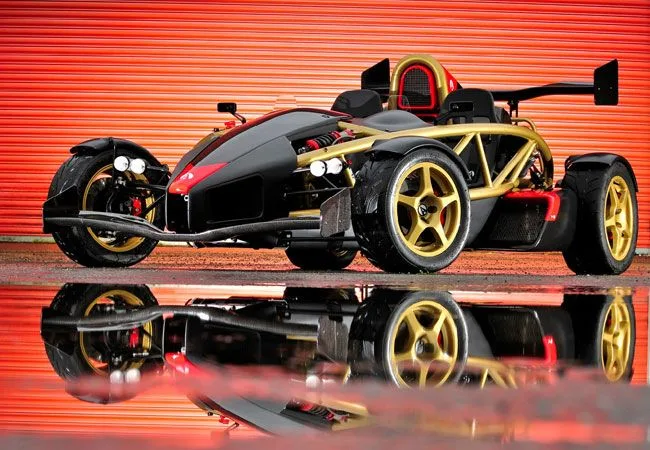
0 - 60: 2.3 seconds / Quarter Mile: 11.5 seconds
Summary
The 2012 Ariel Atom 500 V8 is an extreme, track-focused machine that pushes the boundaries of performance and engineering. This limited-edition model, with only 25 units ever built, embodies Ariel's philosophy of lightweight construction and raw driving experience.
Underneath its minimalist exoskeleton, the Atom 500 V8 houses a bespoke 3.0-liter naturally aspirated V8 engine developed in collaboration with Hartley Engineering. This high-revving powerhouse produces a staggering 500 horsepower and 284 lb-ft of torque, propelling the lightweight car from 0 to 60 mph in a mind-boggling 2.3 seconds. With a power-to-weight ratio that rivals Formula One cars, the Atom 500 V8 is capable of pulling over 2G in corners and reaching a top speed of 168 mph.
The Atom 500 V8 is a raw and visceral driving experience unlike any other. Its minimalist design, lack of doors, roof, or windshield, and exposed mechanical components all contribute to its unique character. The car's racing-derived suspension and slick tires provide exceptional grip and handling, while its aerodynamic bodywork helps keep it planted at high speeds.
The Atom 500 V8 is a car that demands respect and skill from its driver. Its extreme performance and lack of driver aids make it a challenging but incredibly rewarding machine to master. It's a car that is best suited for the racetrack, where its incredible speed and agility can be fully exploited.
2. 2018 Dodge Challenger SRT Demon
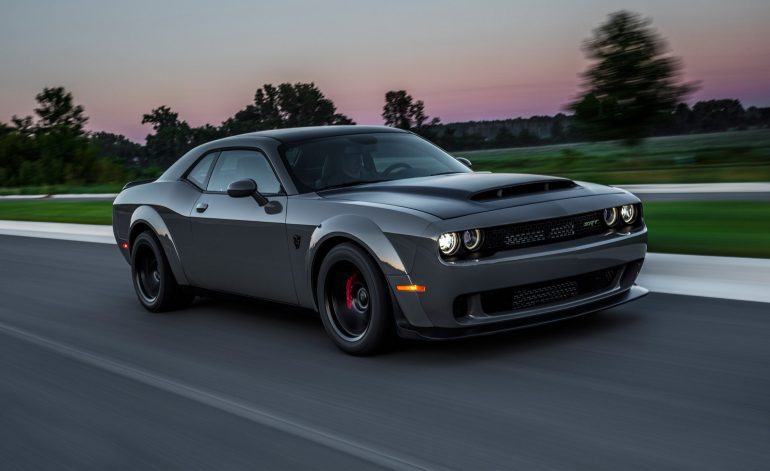
0 - 60: 2.3 seconds / Quarter Mile: 9.6 seconds
Summary
The 2018 Dodge Challenger SRT Demon is a legendary muscle car specifically engineered for drag strip dominance. Its performance is nothing short of extraordinary, shattering records and redefining what a production car could achieve on the quarter-mile.
The heart of the Demon is a supercharged 6.2-liter Hemi V8 engine, a monstrous powerplant that generates 808 horsepower and 717 lb-ft of torque on pump gas. However, with the included Demon Crate and 100+ octane race fuel, it unlocks a staggering 840 horsepower, making it the most powerful production V8 engine ever. Paired with a specially calibrated eight-speed automatic transmission, the Demon could rocket from 0 to 60 mph in a mind-boggling 2.3 seconds, a figure previously unheard of for a production car.
The Demon's performance at the drag strip was nothing short of legendary. It could conquer the quarter-mile in just 9.65 seconds at 140 mph, a feat certified by the National Hot Rod Association (NHRA). To achieve this, the Demon came equipped with drag-specific features like the TransBrake, Torque Reserve, and Drag Mode, all designed to maximize traction and acceleration. The Demon wasn't just fast; it was purpose-built to dominate the drag strip, and it did so with authority.
3. 2017 Tesla Model S P100D 'Ludicrous+'
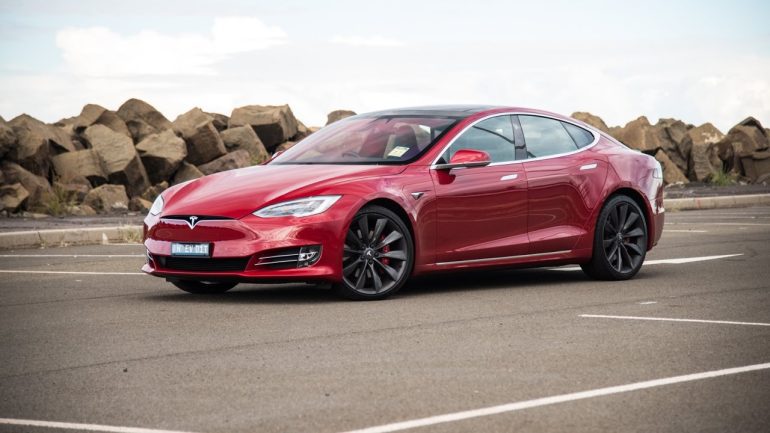
0 - 60: 2.3 seconds / Quarter Mile: 10.5 seconds
Summary
The 2017 Tesla Model S P100D 'Ludicrous+' was an electrifying performance powerhouse that pushed the boundaries of what was achievable in the electric vehicle segment. This special software upgrade, available to existing P100D owners, unlocked even more performance potential from the car's already impressive powertrain.
Equipped with a 100 kWh battery pack and dual electric motors, the P100D could already accelerate from 0 to 60 mph in a blistering 2.5 seconds with the standard "Ludicrous" mode. The 'Ludicrous+' upgrade further enhanced this acceleration, shaving off precious milliseconds and allowing the car to reach 60 mph in an astonishing 2.3 seconds, a feat that rivaled and even surpassed some of the fastest supercars on the market at the time.
The P100D's performance wasn't just about acceleration. It also boasted impressive handling and agility thanks to its low center of gravity, adaptive air suspension, and sophisticated all-wheel-drive system. The car's instant torque delivery from its electric motors provided an exhilarating driving experience, while its advanced technology features, such as Autopilot, further set it apart from its competitors.
The 2017 Tesla Model S P100D 'Ludicrous+' represented a significant milestone in the evolution of electric vehicles, proving that they could be both practical and incredibly fast. Its groundbreaking performance and advanced technology made it a sought-after model among performance enthusiasts and a testament to Tesla's commitment to innovation in the automotive industry.
4. 2011 Bugatti Veyron 16.4 Super Sport
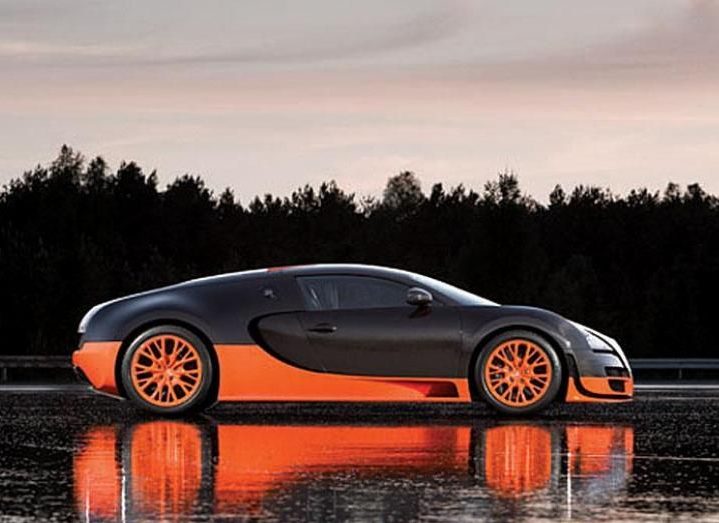
0 - 60: 2.4 seconds / Quarter Mile: 9.6 seconds
Summary
The 2011 Bugatti Veyron 16.4 Super Sport is an automotive legend that redefined the concept of a hypercar. It wasn't just fast; it was a technological marvel that pushed the boundaries of what was possible in terms of speed, engineering, and luxury.
Under the hood, the Super Sport boasted an upgraded version of the standard Veyron's 8.0-liter quad-turbocharged W16 engine. This monstrous powerplant now churned out an astonishing 1,200 horsepower and 1,106 lb-ft of torque. With this immense power, the Super Sport could rocket from 0 to 60 mph in a mind-boggling 2.4 seconds, making it one of the quickest-accelerating production cars ever made. But the real highlight was its top speed. On July 4, 2010, the Super Sport achieved a top speed of 267.856 mph (431.072 km/h), setting a Guinness World Record for the fastest production car at the time.
The Super Sport's performance wasn't just about raw power. It also featured a revised aerodynamic package, with a redesigned front end, a double diffuser, and a fixed rear spoiler, all of which contributed to its exceptional high-speed stability. Its carbon fiber monocoque chassis, active suspension, and specially developed Michelin Pilot Sport Cup 2 tires further enhanced its handling and grip on the track.
Inside the cabin, the Super Sport retained the luxurious feel of the standard Veyron, with premium leather upholstery, handcrafted details, and a plethora of advanced technology features. However, the focus was clearly on performance, with lightweight materials and a minimalist design that emphasized the car's racing pedigree.
5. 2017 Bugatti Chiron Sport
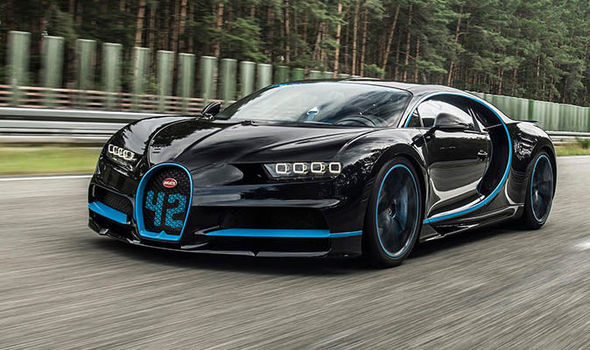
0 - 60: 2.4 seconds / Quarter Mile: 9.6 seconds
Summary
The 2017 Bugatti Chiron Sport is a high-performance variant of the already extraordinary Bugatti Chiron, designed to enhance the car's agility and handling on the track while retaining its luxurious character on the road. It's a testament to Bugatti's unwavering commitment to pushing the boundaries of automotive engineering and performance.
Beneath its aerodynamically sculpted bodywork, the Chiron Sport houses the same 8.0-liter quad-turbocharged W16 engine as the standard Chiron, producing a mind-boggling 1,500 horsepower and 1,180 lb-ft of torque. This immense power, channeled through a seven-speed dual-clutch transmission and all-wheel-drive system, allows the Chiron Sport to rocket from 0 to 60 mph in a mere 2.4 seconds, with a top speed electronically limited to 261 mph.
While the Chiron Sport shares the same powertrain as the standard Chiron, it boasts a range of enhancements that improve its handling and agility on the track. It features a stiffer suspension, revised steering, and a torque-vectoring system that actively distributes power to individual wheels, improving cornering grip and stability. It also has a lighter weight thanks to the use of carbon fiber components, further enhancing its responsiveness and handling. These upgrades, along with the standard carbon ceramic brakes, make the Chiron Sport a formidable track weapon, capable of setting blistering lap times.
The Chiron Sport's interior remains as luxurious as the standard Chiron, with premium materials, handcrafted details, and a comfortable driving position. While its focus is on performance, it still offers the comfort and refinement expected of a Bugatti, making it a true hypercar that can be enjoyed both on the road and the track.
6. 2015 Ferrari LaFerrari
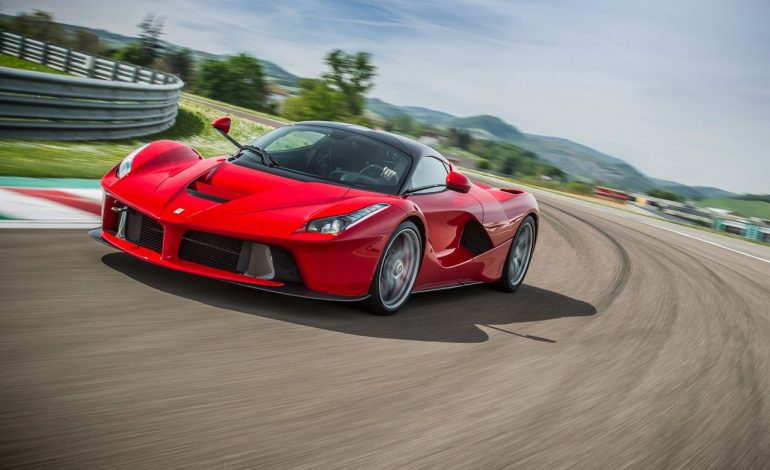
0 - 60: 2.4 seconds / Quarter Mile: 9.7 seconds
Summary
The 2015 Ferrari LaFerrari is a groundbreaking hybrid hypercar that represents the pinnacle of Ferrari's engineering and performance prowess. Its striking, aerodynamic design is not just for show; it's a functional masterpiece that helps the LaFerrari achieve incredible speeds and handling.
At the heart of this beast lies a naturally aspirated 6.3-liter V12 engine, which alone produces a staggering 789 horsepower. This is supplemented by a 161-horsepower electric motor, bringing the total system output to a mind-blowing 950 horsepower and 663 lb-ft of torque. This power is channeled through a seven-speed dual-clutch transmission, propelling the LaFerrari from 0 to 60 mph in 2.4 seconds and on to a top speed exceeding 217 mph.
But the LaFerrari isn't just about raw power. Its advanced hybrid system, known as HY-KERS, not only boosts performance but also improves fuel efficiency. This technology, derived from Ferrari's Formula One program, recovers kinetic energy during braking and stores it in batteries, which can then be used to provide additional power to the wheels. The LaFerrari also features active aerodynamics, including a moveable rear spoiler and diffuser, which adjust to optimize downforce and drag depending on driving conditions. The LaFerrari is a technological marvel, a testament to Ferrari's commitment to innovation and a symbol of the future of high-performance automobiles.
7. 2014 Rimac Concept One

0 - 60: 2.4 seconds / Quarter Mile: N/A seconds
Summary
The 2014 Rimac Concept One is an all-electric hypercar that shook the automotive world with its groundbreaking performance and innovative technology. Hailing from Croatia, a country not typically associated with high-performance automobiles, the Concept One proved that electric vehicles could rival, and even surpass, traditional gasoline-powered supercars.
At the heart of the Concept One's performance was its quad-motor setup, with one electric motor powering each wheel. This unique configuration produced a combined output of 1,088 horsepower and a staggering 1,180 lb-ft of torque, available instantly from a standstill. This immense power, coupled with all-wheel drive and torque vectoring, allowed the Concept One to catapult from 0 to 60 mph in 2.4 seconds. Its top speed was electronically limited to 221 mph, but it was clear that this electric powerhouse had the potential to go much faster.
The Concept One's performance wasn't just about straight-line speed. Its lightweight carbon fiber construction, advanced suspension system, and torque vectoring technology made it incredibly agile and responsive. The car's sophisticated battery management system and regenerative braking further enhanced its performance and efficiency. Inside, the Concept One's interior was a minimalist yet luxurious environment, with a focus on driver engagement and technology.
The 2014 Rimac Concept One was a game-changer, a car that proved that electric vehicles could be just as exciting and capable as their gasoline-powered counterparts. It set new benchmarks for performance and paved the way for a new generation of electric supercars. Its legacy lives on as a testament to Rimac's innovation and commitment to pushing the boundaries of automotive technology.
8. 2015 Ariel Atom 3.5R
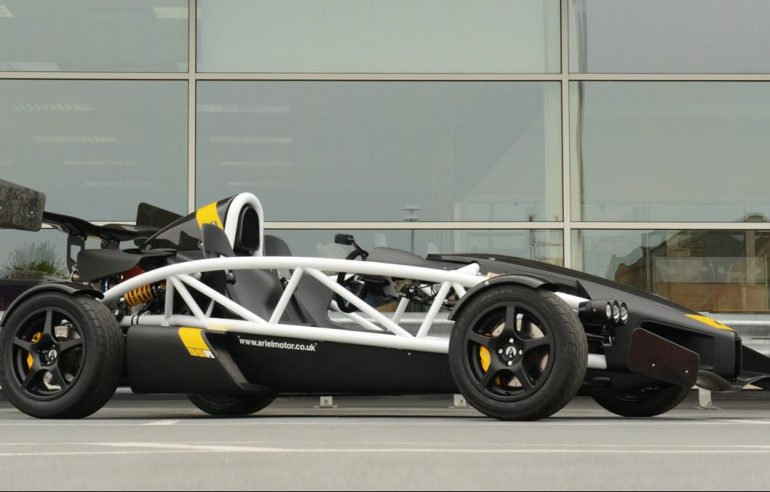
0 - 60: 2.5 seconds / Quarter Mile: 10.8 seconds
Summary
The 2015 Ariel Atom 3.5R is a track-focused marvel that embodies the essence of lightweight performance and pure driving thrills. As a high-performance variant of the already exhilarating Atom, the 3.5R takes things to the next level with a more powerful engine and enhanced handling capabilities.
Underneath its signature exposed chassis, the Atom 3.5R houses a supercharged 2.0-liter Honda K20Z engine, meticulously tuned to produce 350 horsepower and 243 lb-ft of torque. This power, combined with the car's featherlight weight of just 1210 pounds, translates to a 0-60 mph time of just 2.9 seconds. While the top speed is estimated to be around 165 mph, the true focus of the Atom 3.5R lies in its exceptional handling and cornering prowess.
The 3.5R's performance isn't just about raw power. It boasts a race-derived suspension with adjustable Öhlins dampers and a limited-slip differential, allowing it to carve through corners with unparalleled precision and grip. Its lightweight construction, combined with aerodynamic enhancements like a large rear wing and front splitter, further enhances its agility and stability at high speeds.
9. 2013 Caterham Seven R600
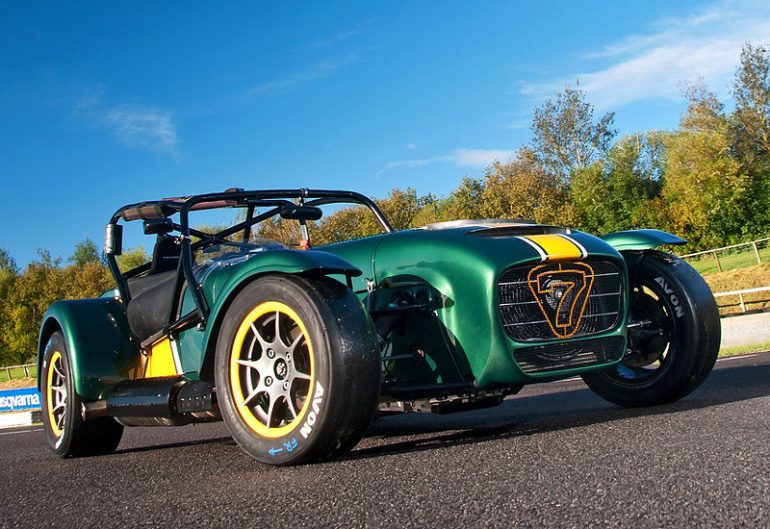 2013 Caterham Seven Superlight R600; top car design rating and specifications
2013 Caterham Seven Superlight R600; top car design rating and specifications0 - 60: 2.5 seconds / Quarter Mile: N/A seconds
Summary
The 2013 Caterham Seven R600 is a track-focused beast that embodies the British manufacturer's commitment to lightweight, unadulterated performance. As the most powerful production Seven ever built at the time, the R600 is a visceral and exhilarating machine that demands respect from its driver.
Under the hood, the R600 is powered by a supercharged 2.0-liter Ford Duratec engine, a departure from the naturally aspirated engines typically found in Caterham Sevens. This forced induction powerplant produces an impressive 275 horsepower and 200 lb-ft of torque, a significant amount of power for a car that weighs just 520kg. The result is a 0-60 mph time of just 2.5 seconds, making it one of the quickest accelerating cars on the market.
The R600's performance isn't just about straight-line speed. Its lightweight chassis, race-derived suspension, and sticky Avon CR500 tires provide exceptional handling and agility, allowing it to carve through corners with unparalleled precision. The car's direct steering and lack of driver aids ensure that the driver is fully engaged and connected to the road, making every drive an adrenaline-pumping experience.
While the R600 is primarily designed for the track, it can be made road-legal with the addition of a few necessary components. However, its spartan interior, lack of creature comforts, and focus on raw performance make it clear that this car is not meant for cruising. It's a purebred racing machine, built for those who crave an unfiltered and exhilarating driving experience.
10. 2015 Koenigsegg One:1
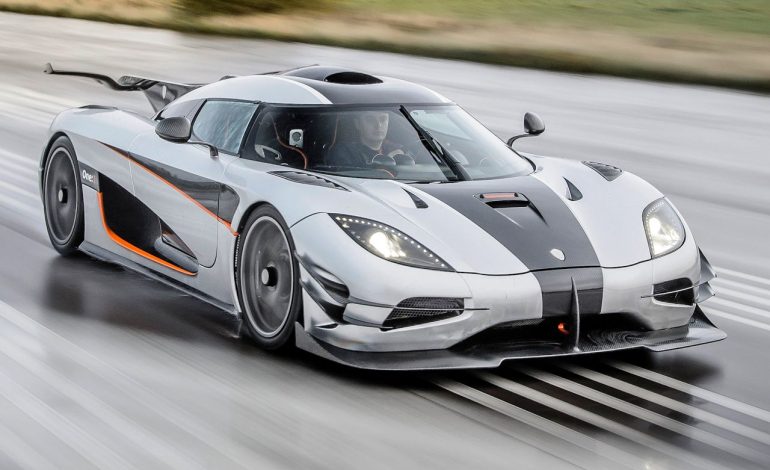
0 - 60: 2.5 seconds / Quarter Mile: 10.0 seconds
Summary
The 2015 Koenigsegg One:1 is a legendary hypercar that redefines the boundaries of automotive performance. Its name signifies the perfect 1:1 power-to-weight ratio, achieved by producing one megawatt of power (1,341 horsepower) and weighing 1,341 kilograms. This feat of engineering makes the One:1 one of the fastest and most powerful production cars ever created.
Under the hood, a twin-turbocharged 5.0-liter V8 engine roars to life, generating a staggering 1,341 horsepower and 1,011 lb-ft of torque. This immense power is channeled to the rear wheels through a seven-speed dual-clutch transmission, allowing the One:1 to catapult from 0 to 62 mph in just 2.5 seconds. Its other claimed numbers read like a fanboy fantasy, too. It'll go from a dead stop to 250 mph in 20 seconds, reach a 273-mph top speed, and generate 1345 pounds of downforce at 160 mph. Yet it's real. Koenigsegg has made it.
The One:1's performance isn't just about raw power; it's also a masterclass in aerodynamics and handling. Its active aerodynamic elements, including a hydraulically actuated rear wing and underbody flaps, generate massive downforce, ensuring stability and grip at high speeds. Its race-inspired suspension and carbon-ceramic brakes further enhance its track capabilities, making it a formidable machine on any circuit. The One:1 features new, unique solutions that enhance track performance without compromising top speed or everyday usability, with a stunning visual appearance to go with it.
11. 2013 Lamborghini Sesto Elemento
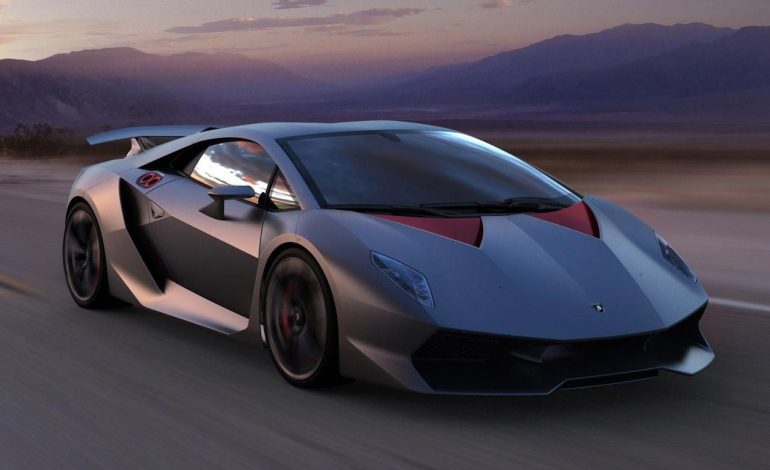
0 - 60: 2.5 seconds / Quarter Mile: 10.4 seconds
Summary
The 2013 Lamborghini Sesto Elemento is a limited-edition, track-only hypercar that embodies Lamborghini's relentless pursuit of lightweight performance and cutting-edge technology. Its name, "Sixth Element," refers to carbon, the material that extensively constructs its body and chassis, resulting in an astonishingly low weight of just 999 kg (2,202 lbs).
Underneath its aggressive, angular bodywork, the Sesto Elemento houses a naturally aspirated 5.2-liter V10 engine borrowed from the Gallardo Superleggera. However, this powerplant has been tuned to produce 570 horsepower and 540 Nm (398 lb-ft) of torque, resulting in an incredible power-to-weight ratio. This translates to blistering acceleration, with the Sesto Elemento capable of launching from 0-60 mphin 2.5 seconds. Its top speed is estimated to be over 350 km/h (217 mph), though official figures were never released due to its track-only nature.
The Sesto Elemento's performance isn't just about raw power. It's also a testament to its advanced engineering and aerodynamic design. Its carbon fiber monocoque chassis, along with carbon fiber body panels and suspension components, contribute to its lightweight construction and exceptional rigidity. The car's aggressive aerodynamic elements, including a massive rear wing and diffuser, generate significant downforce, ensuring it remains planted and stable at high speeds.
12. 2018 Lamborghini Aventador SVJ
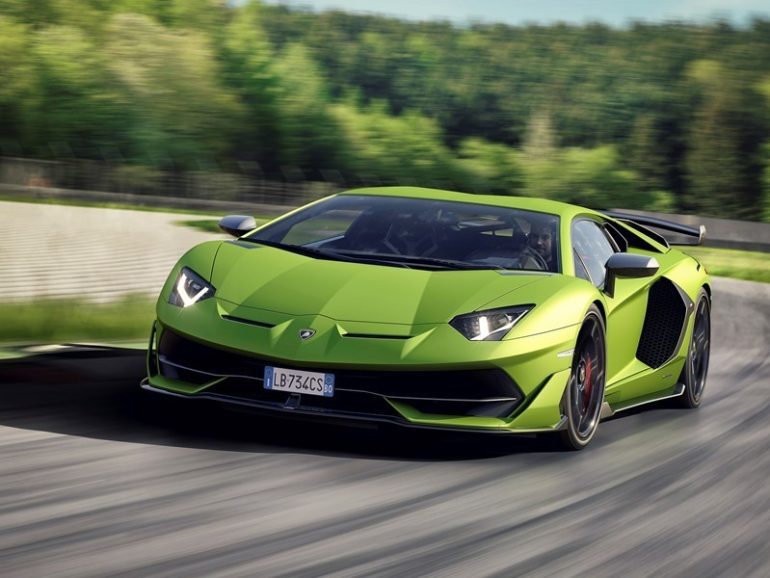
0 - 60: 2.5 seconds / Quarter Mile: 10.3 seconds
Summary
The 2018 Lamborghini Aventador SVJ is a track-focused hypercar that embodies the brand's relentless pursuit of performance and aerodynamic excellence. The SVJ, which stands for "Superveloce Jota," represents the pinnacle of the Aventador lineup, pushing the boundaries of what a naturally aspirated V12 engine can achieve.
Underneath its aerodynamically sculpted bodywork, which boasts a massive rear wing, aggressive front splitter, and extensive use of carbon fiber, the SVJ houses a naturally aspirated 6.5-liter V12 engine. This powerhouse has been tuned to produce 770 horsepower (566 kW) and 531 lb-ft (720 Nm) of torque, a significant increase over the standard Aventador. Paired with a lightweight chassis and a seven-speed ISR transmission, the SVJ rockets from 0 to 60 mph in just 2.5 seconds and reaches a top speed of 217 mph (350 km/h).
But the SVJ's performance isn't just about straight-line speed. It also features Lamborghini's Aerodinamica Lamborghini Attiva (ALA) 2.0 system, an active aerodynamics technology that optimizes downforce and drag for exceptional handling and stability at high speeds. Its rear-wheel steering system further enhances agility, making the SVJ feel remarkably nimble for a car of its size. The car's lightweight carbon fiber construction and massive carbon-ceramic brakes ensure it can handle the most demanding track conditions with ease. In fact, it set a production car lap record at the Nürburgring Nordschleife with a time of 6:44.97 minutes.
The SVJ's interior is stripped down and focused, with carbon fiber accents and Alcantara upholstery, emphasizing its track-oriented nature. Lightweight bucket seats and a digital instrument cluster with performance-focused displays further contribute to its driver-centric cockpit.
13. 2013 Pagani Zonda Revolución
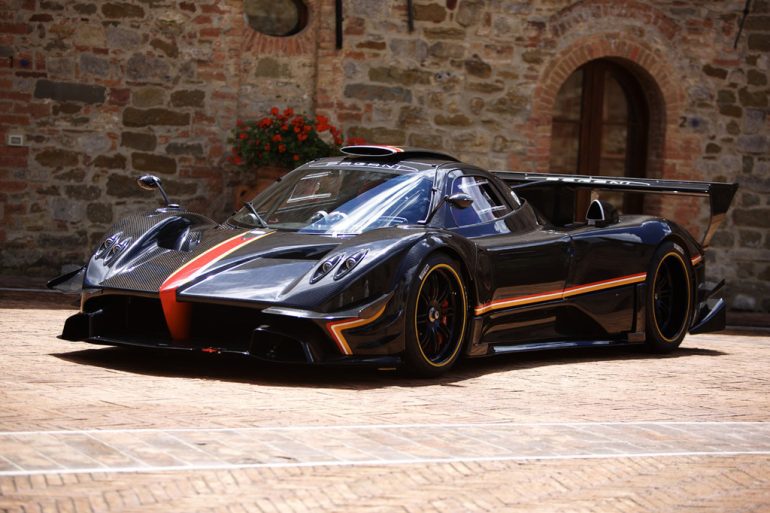
0 - 60: 2.5 seconds / Quarter Mile: N/A seconds
Summary
The 2013 Pagani Zonda Revolución is a track-only hypercar that represents the pinnacle of performance engineering and automotive artistry. Limited to just five units, it's an exclusive and highly sought-after collector's item that pushes the boundaries of what's possible on the racetrack.
Underneath its aggressive, aerodynamically sculpted bodywork, the Revolución houses a naturally aspirated 6.0-liter Mercedes-AMG V12 engine. This powerhouse produces an astonishing 800 horsepower and 538 lb-ft of torque, propelling the car from 0 to 62 mph in an estimated 2.5 seconds and on to a top speed exceeding 230 mph. Its acceleration is nothing short of ferocious, delivering a visceral experience that few cars can match.
But the Revolución's performance isn't just about raw power. It's also a masterclass in engineering and aerodynamics. The car features a carbon-titanium monocoque chassis, active aerodynamics with a DRS (Drag Reduction System) inspired by Formula One, and a 12-way adjustable suspension system. These elements work in harmony to provide unparalleled grip, handling, and downforce, allowing the Revolución to set blistering lap times on any circuit. Its carbon ceramic brakes, specially developed by Brembo, ensure exceptional stopping power, while its magnesium wheels and Pirelli P Zero tires provide maximum grip.
The Zonda Revolución is not just a car; it's a testament to Pagani's unwavering passion for automotive artistry and engineering excellence. Its breathtaking performance, exquisite craftsmanship, and exclusivity make it a true collector's dream and a symbol of the pinnacle of automotive achievement.
14. 2015 SSC Tuatara
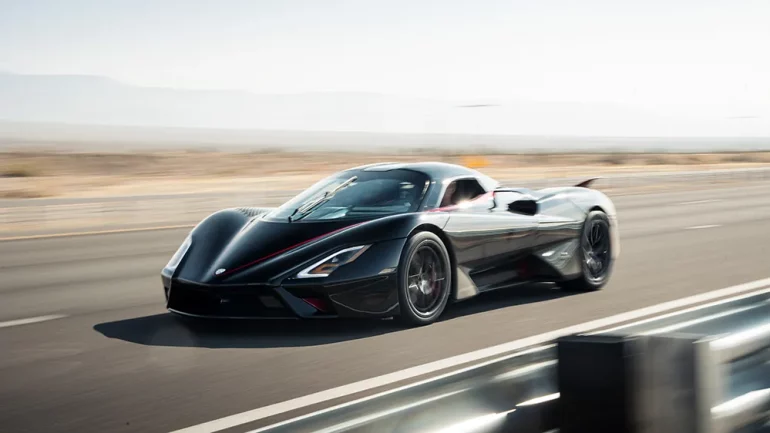
0 - 60: 2.5 seconds / Quarter Mile: 9.7 seconds
Summary
The 2015 SSC Tuatara was an American hypercar that aimed to shatter records and push the boundaries of automotive performance. With its sleek, aerodynamic design and powerful engine, it promised to be one of the fastest production cars ever built.
Underneath its sculpted bodywork, the Tuatara housed a twin-turbocharged 5.9-liter V8 engine, a custom-built powerhouse that produced an impressive 1,350 horsepower on 91 octane fuel and an astounding 1,750 horsepower on E85 fuel. This immense power, channeled through a seven-speed automated manual transmission, was predicted to propel the Tuatara to a top speed exceeding 300 mph, a claim that generated significant excitement and anticipation among automotive enthusiasts.
Although the Tuatara's top speed claims have been disputed and not officially verified, its performance potential remains undeniable. Its carbon fiber monocoque chassis, active aerodynamics, and lightweight construction contribute to its exceptional handling and stability at high speeds. Its impressive power-to-weight ratio, combined with advanced technology, showcases SSC's commitment to pushing the boundaries of automotive engineering.
The Tuatara's interior is a blend of luxury and performance, featuring premium materials and a driver-focused cockpit with digital displays and ergonomic controls. While the car's primary focus is on performance, it still offers a comfortable and refined driving experience for those who want to enjoy its power on the open road.
15. 2017 Audi R8 V10 Plus
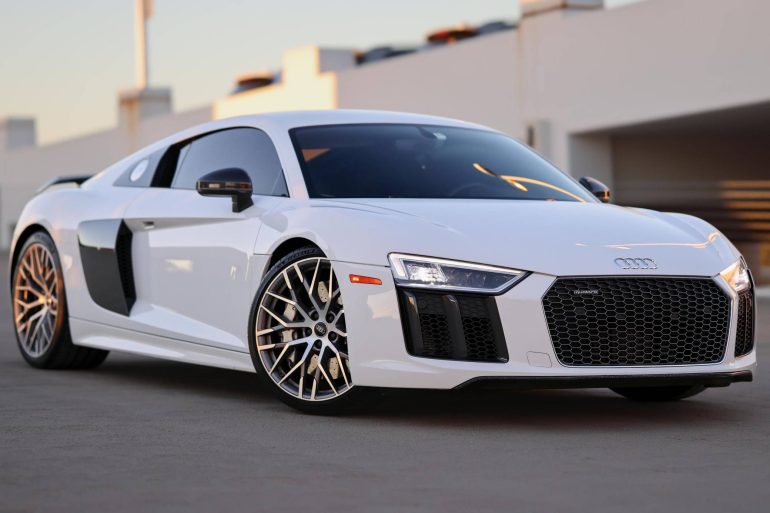
0 - 60: 2.6 seconds / Quarter Mile: 10.6 seconds
Summary
The 2017 Audi R8 V10 Plus was a high-performance supercar that epitomized Audi's commitment to cutting-edge technology and exhilarating performance. This track-focused variant of the R8 took the already impressive V10 model and elevated it to a new level with a range of enhancements designed to maximize speed and agility.
Under its sleek and aerodynamic exterior, the R8 V10 Plus housed a naturally aspirated 5.2-liter V10 engine, a masterpiece of engineering that produced a remarkable 610 horsepower and 413 lb-ft of torque. This powerful engine, paired with a seven-speed S tronic dual-clutch transmission and Audi's quattro all-wheel-drive system, propelled the car from 0 to 60 mph in 2.6 seconds. Its top speed of 205 mph made it one of the fastest cars in its class, and its acceleration was nothing short of breathtaking.
But the R8 V10 Plus wasn't just about straight-line speed. It also boasted exceptional handling and agility, thanks to its lightweight aluminum and carbon fiber construction, magnetic ride adaptive suspension, and rear-wheel steering. The car's precise steering and powerful carbon-ceramic brakes provided exceptional control and stopping power, allowing drivers to push the car to its limits with confidence. Inside, the R8 V10 Plus featured a driver-focused cockpit with sport seats, a flat-bottom steering wheel, and a Virtual Cockpit digital instrument cluster.



